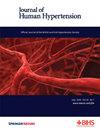Associations between cardiovascular health metrics in life’s essential 8 and incident hypertension: The LIFE Study
IF 3.4
4区 医学
Q2 PERIPHERAL VASCULAR DISEASE
引用次数: 0
Abstract
The American Heart Association’s Life’s Essential 8 is a set of modifiable lifestyle habits and risk factors used to assess cardiovascular health (CVH). However, little is known about the potential impact of non-ideal statuses in these metrics on hypertension risk. This study aimed to clarify the associations between the total number of non-ideal CVH metrics and incident hypertension in a Japanese population. This retrospective cohort study was conducted using data from 10 Japanese municipalities participating in the LIFE Study. We identified National Health Insurance enrollees who had undergone health checkups between April 2017 and March 2018. Participants were categorized into 7 groups (0, 1, 2, 3, 4, 5, and 6–7 metrics) based on their total number of non-ideal CVH metrics (excluding blood pressure). The hazard ratio of each group (reference: 0 metrics) for new-onset hypertension was estimated using Cox proportional hazards models. During a mean follow-up period of 1405 days, 22 826 (24.5%) participants developed hypertension. Hypertension risk significantly increased with higher numbers of non-ideal CVH metrics (hazard ratios ranged from 1.067 for 1 metric to 1.609 for 6–7 metrics). Additionally, all non-ideal CVH metrics except for blood lipids were found to be significant predictors of hypertension. Higher numbers of non-ideal CVH metrics in Life’s Essential 8 were consistently associated with a higher incidence of hypertension. Multicomponent lifestyle modification strategies that improve overall CVH status may help to prevent hypertension.

生命中心血管健康指标与高血压事件之间的关系:life研究
美国心脏协会(American Heart Association)的《生活基本要素8》(Life’s Essential 8)是一套可改变的生活习惯和风险因素,用于评估心血管健康(CVH)。然而,对于这些指标中非理想状态对高血压风险的潜在影响知之甚少。本研究旨在阐明日本人群中非理想CVH指标总数与高血压事件之间的关系。本回顾性队列研究使用了参与LIFE研究的10个日本城市的数据。我们确定了在2017年4月至2018年3月期间接受过健康检查的国民健康保险参保人。根据非理想CVH指标(不包括血压)的总数,将参与者分为7组(0、1、2、3、4、5和6-7个指标)。采用Cox比例风险模型估计各组(参考指标:0)新发高血压的风险比。在平均1405天的随访期间,22 826名(24.5%)参与者患上高血压。非理想CVH指标越多,高血压风险显著增加(风险比范围从1个指标的1.067到6-7个指标的1.609)。此外,除血脂外,所有非理想CVH指标都被发现是高血压的重要预测因子。在生命基本8项指标中,非理想CVH指标越多,高血压发病率越高。改善CVH整体状态的多组分生活方式改变策略可能有助于预防高血压。
本文章由计算机程序翻译,如有差异,请以英文原文为准。
求助全文
约1分钟内获得全文
求助全文
来源期刊

Journal of Human Hypertension
医学-外周血管病
CiteScore
5.20
自引率
3.70%
发文量
126
审稿时长
6-12 weeks
期刊介绍:
Journal of Human Hypertension is published monthly and is of interest to health care professionals who deal with hypertension (specialists, internists, primary care physicians) and public health workers. We believe that our patients benefit from robust scientific data that are based on well conducted clinical trials. We also believe that basic sciences are the foundations on which we build our knowledge of clinical conditions and their management. Towards this end, although we are primarily a clinical based journal, we also welcome suitable basic sciences studies that promote our understanding of human hypertension.
The journal aims to perform the dual role of increasing knowledge in the field of high blood pressure as well as improving the standard of care of patients. The editors will consider for publication all suitable papers dealing directly or indirectly with clinical aspects of hypertension, including but not limited to epidemiology, pathophysiology, therapeutics and basic sciences involving human subjects or tissues. We also consider papers from all specialties such as ophthalmology, cardiology, nephrology, obstetrics and stroke medicine that deal with the various aspects of hypertension and its complications.
 求助内容:
求助内容: 应助结果提醒方式:
应助结果提醒方式:


